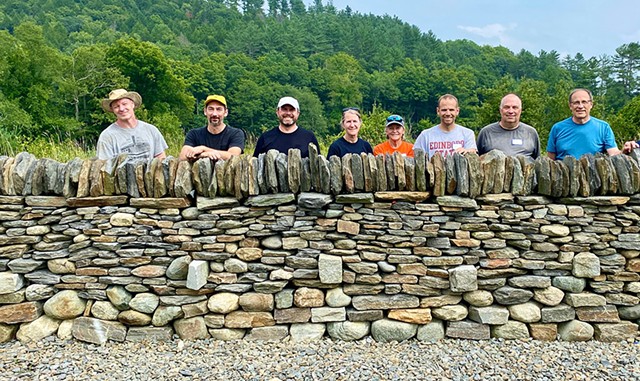
- Steve Goldstein
- Participants in a recent workshop at the Stone Trust
Some find solace in the physical feel of stone. Some claim it speaks to them. The permanence of stone is legendary: A sword cannot be drawn from it; a mythical Greek monarch defines futility by endlessly pushing it up a steep hill. Stone represents the past, present and future. It's an eternally renewable resource.
And with it, we build.
Attending a recent workshop at the Stone Trust Center at Scott Farm in Dummerston, seven mostly middle-aged, mostly able-bodied men aimed to transform a pile of stones into a wall that could stand for eternity. Our task was to accomplish this without mortar, cement or other binding material. We would learn that, in dry stone walling, gravity and friction hold the stones together.
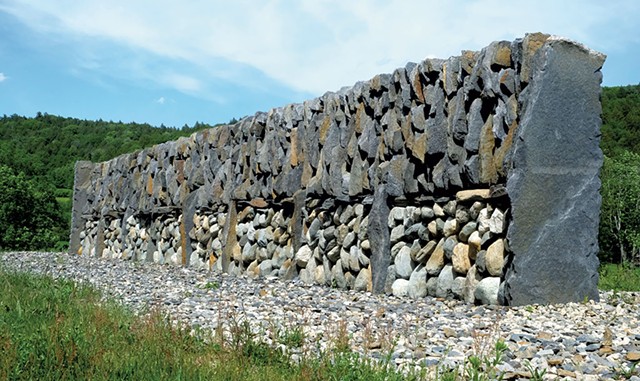
- Courtesy
- "Monolith" by Jared Flynn at the Stone Trust's Stone Wall Park
The Stone Trust, a nonprofit established by a group of practitioners in 2010, has a mission to "preserve and advance the art and craft of dry stone walling," according to its website. Its curriculum follows international standards initially established by the Dry Stone Walling Association of Great Britain. Students in the Vermont workshops — from introductory to master level — explore the craft of making art from stone, some of which is granite quarried nearby.
A single day at the Stone Trust won't make you a waller, but it might inspire you to become one. Just ask the teachers.
Michael Papile, a 60-year-old Massachusetts financial executive, said dry stone walling is the most difficult and exciting thing he's ever done. After taking a one-day workshop in 2017, he called his wife. "Look," he remembered telling her, "I have to do this."
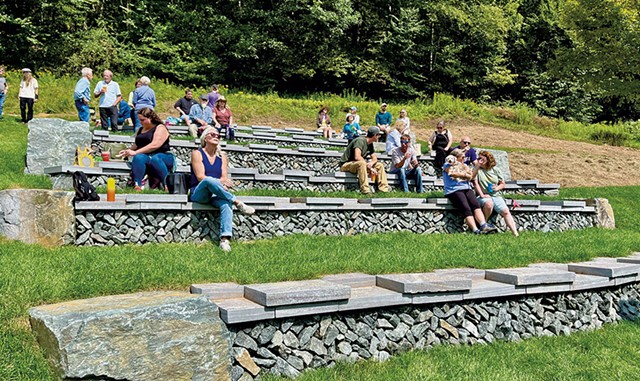
- Courtesy
- The Odeon at Mission Farm in Killington, with stonework by Dan Snow of the Stone Trust
Now, after many more courses, Papile is a Stone Trust instructor and certified Level II professional. His business card reads, "Stone Wall Tony."
Fellow instructor Judy Rand, a native Vermonter who now lives in Huntington, N.Y., said she came to walling late in life; at 73, she exudes energy and enthusiasm. A painter and photographer, she obtained her Level II certification in Derbyshire, England, adding walling to her art practice.
Rand noted that walling is not without risk. Handling heavy stones — some the size and weight of manhole covers — requires focus: Finger pinches and mashed toes are not uncommon. When the course mandates steel-toed boots and protective eyewear, you know it's not an art history class. But if walling is hard on the body, it's balm for the soul.
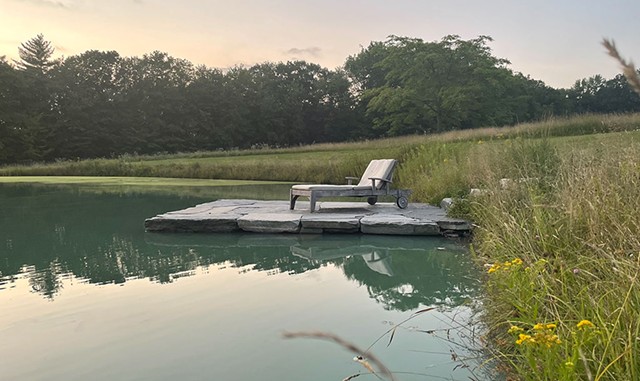
- Courtesy
- Dry stone dock by Seth Harris
"I like the feeling of the stone on my hands, and I like finding the right spot on the wall for a stone," Rand explained. "And at the end of the day, the feeling of exhaustion and gratification."
Dry stone walling is not just about, well, walls. Stone is used to build wells, steps, archways, pass-throughs, benches, pagodas and more. Many such designs dot the undulating terrain of the trust's Stone Wall Park, enthralling pro wallers and wannabes alike.
Amy-Louise Pfeffer took over the Stone Trust as executive director in 2019 and has presided over a major expansion to eight training sites in North America. The trust has trained more than 4,000 individuals since its inception — 1,800 in just the past three years, according to Pfeffer. Turning a pile of rocks into sculpture turns her on.
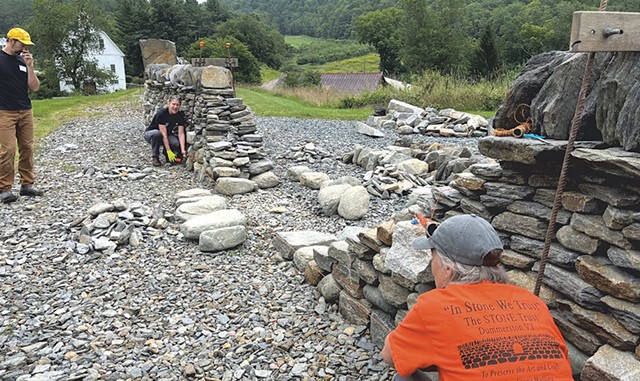
- Steve Goldstein
- A workshop at the Stone Trust
Stonework, she said, "connects people to the materiality of earth, of existence and to the historic record of humankind interacting with that materiality for millennia."
Practitioners, Pfeffer added, form a community "that is really immersed in the tradition and the craft and the artistry. They also find it very Zen."
Walling also can be deeply personal. Pfeffer recalled a workshop that a mother and daughter attended together. Asked why they were taking the course, the women said they'd recently lost a close relative and wanted to build a stone memorial. "It was very moving," Pfeffer said.
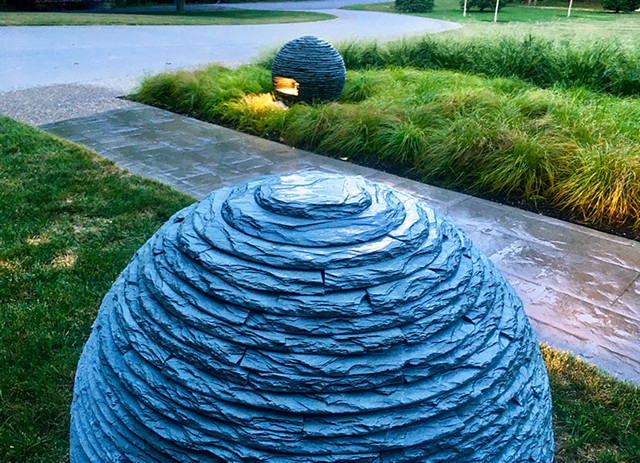
- Courtesy
- Dry stone pathway light spheres in Cornwall, with stonework by Jamie Masefield
Our recent cohort of wallers included a National Park Service ranger, a graphic designer, two college professors, a semiconductor salesman and a journalist. What motivates people — who have never done anything remotely like this — to spend several hundred dollars on lugging heavy stones for a structure that is not their own?
Brian Hennessey of Burlington said he just wants to be knowledgeable about the process when he hires a pro to build a garden wall.
Harvard Business School prof David Scharfstein was an eager and vigorous waller. "I just love the dry stone walls of Vermont," he explained. He hopes to one day build a retaining wall on his property and, like Hennessey, sought to understand their construction.
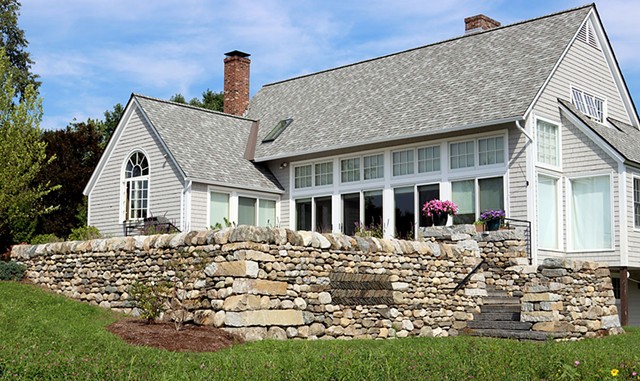
- Courtesy
- A dry stone retaining wall and patio steps in Rockingham, with stonework by Brian Post
Over the seven and a half hours we spent dismantling and rebuilding a 15-foot-long section of stone wall, we learned the jargon of walling. Foundation stones are big flat ones that form the base. Building stones are the guts of a wall, with larger rocks ascending to smaller ones. Throughstones are long, rectangular pieces inserted about halfway up to bind the stones and ensure stability. Copestones are placed vertically at the top of the wall.
Gaps are filled with smaller rocks, a process known as hearting. Think of a jigsaw puzzle composed of 40-pound pieces.
According to Papile, the craft is not difficult to teach. "There's nothing that you teach that is counterintuitive," he said. "It may be new to you, but it's nothing that doesn't make sense."
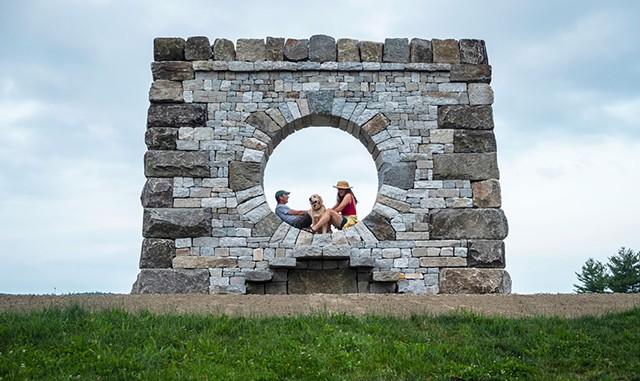
- Courtesy
- Moon Bridge at Green Mountain Orchards in Putney, with stonework by Jared Flynn
Yet for the students, dry stone walling can be surprising, "like seeing fire for the first time," Papile suggested.
The fire analogy works for teachers, too. Rand attended high school in nearby Brattleboro and shared an art class with Dan Snow. Years later, she saw Snow's name attached to a lecture on dry stone walls. When they reconnected, Rand said she was astonished to learn that he had become a master craftsman and was a cofounder of the Stone Trust.
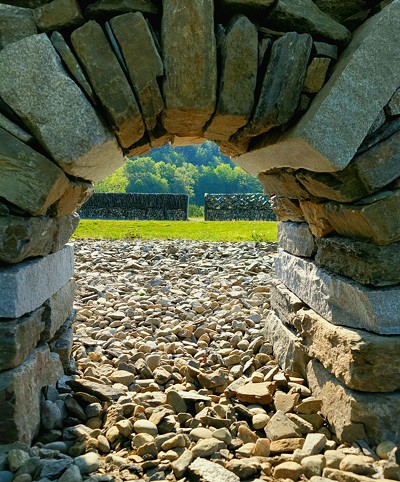
- Courtesy
- A wall at the Stone Trust's Stone Wall Park
Shortly after, Rand visited Dummerston and realized this was a craft she'd overlooked. "I signed up for a workshop and then took another and another," she said, "and I never looked back."
With a few pinched fingers and sore backs, our cohort seemed to agree with Papile: The first walling workshop was both difficult and exciting. We admired our day's labor — an impressive stone wall — even knowing that another class would soon tumble it to pieces.
What would last was the experience: seven total strangers transformed into comrades in stone. Some perhaps left with the thought, I have to do this.










Comments
Comments are closed.
From 2014-2020, Seven Days allowed readers to comment on all stories posted on our website. While we've appreciated the suggestions and insights, right now Seven Days is prioritizing our core mission — producing high-quality, responsible local journalism — over moderating online debates between readers.
To criticize, correct or praise our reporting, please send us a letter to the editor or send us a tip. We’ll check it out and report the results.
Online comments may return when we have better tech tools for managing them. Thanks for reading.